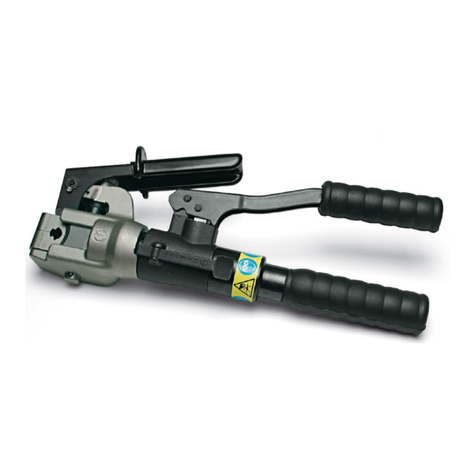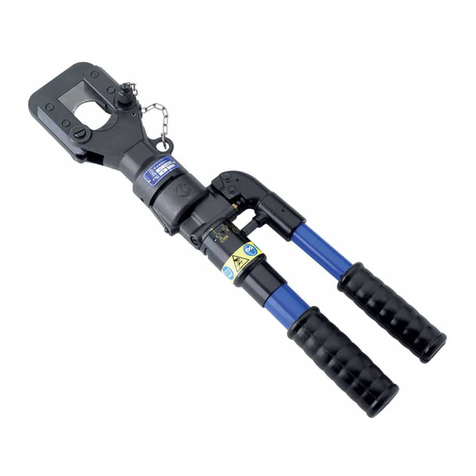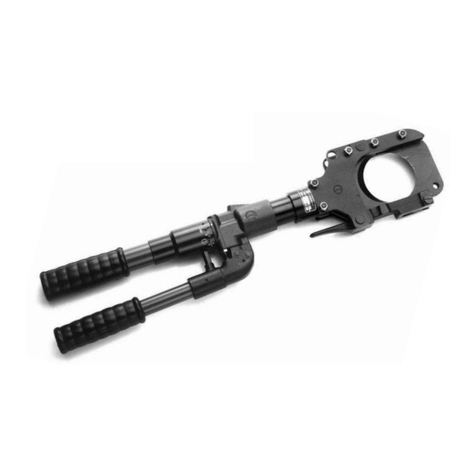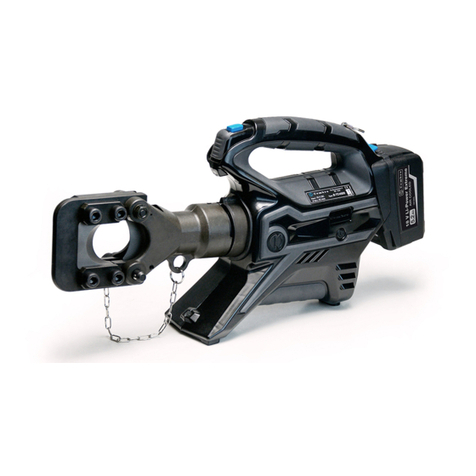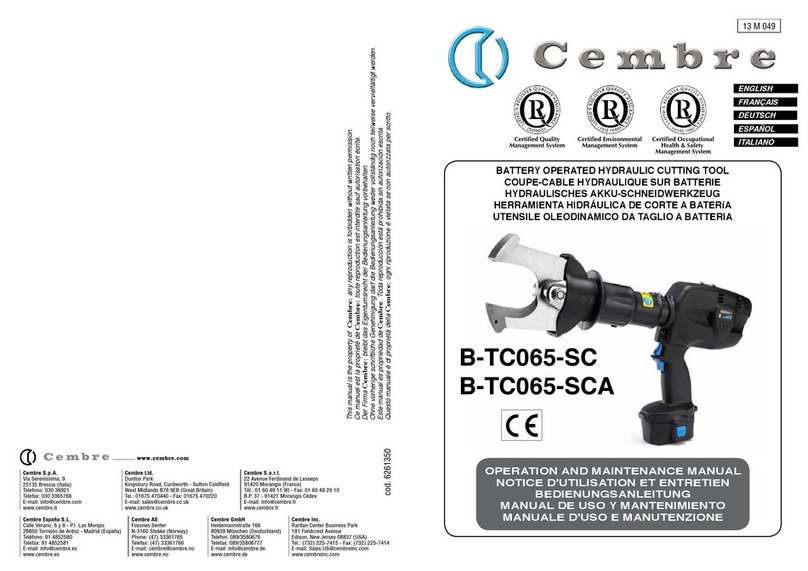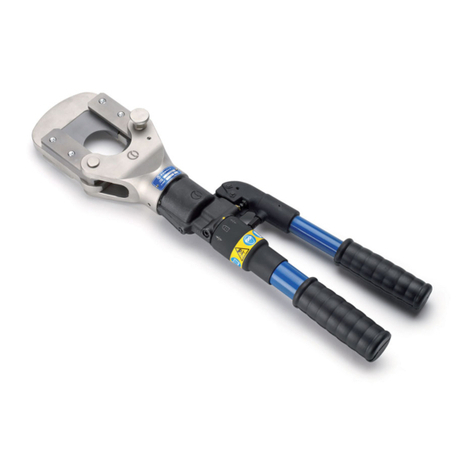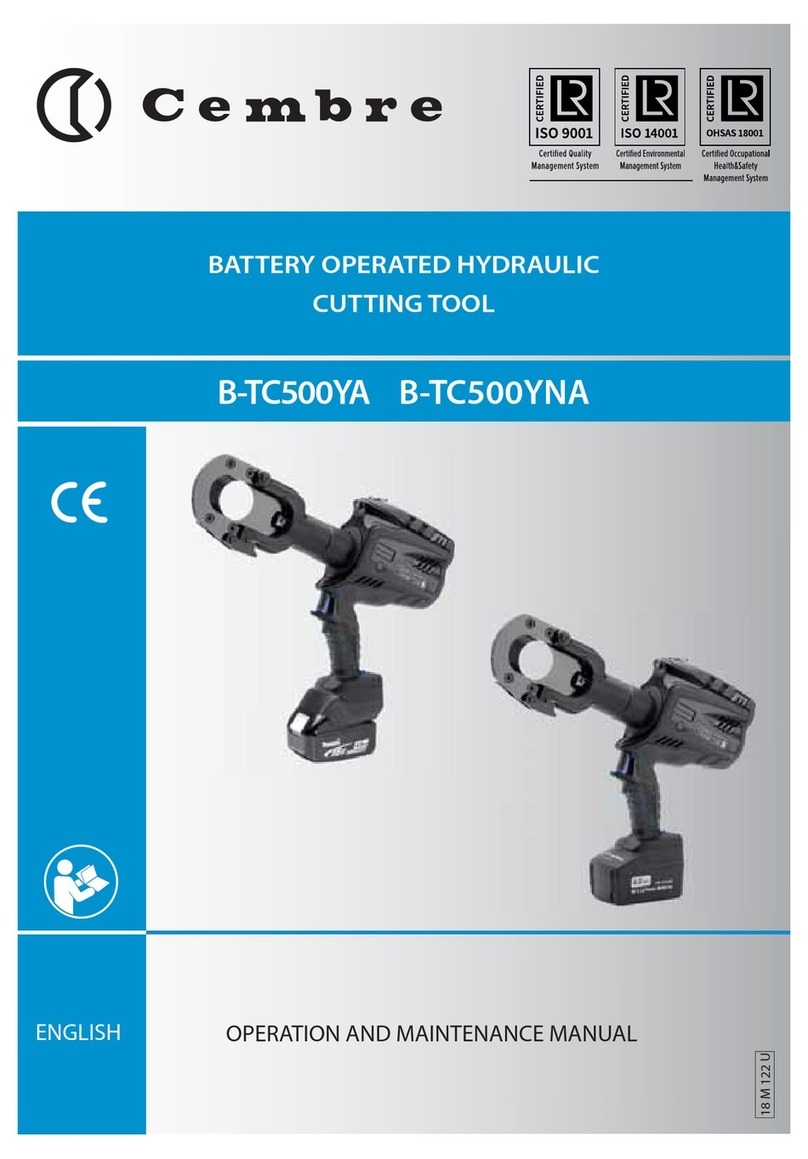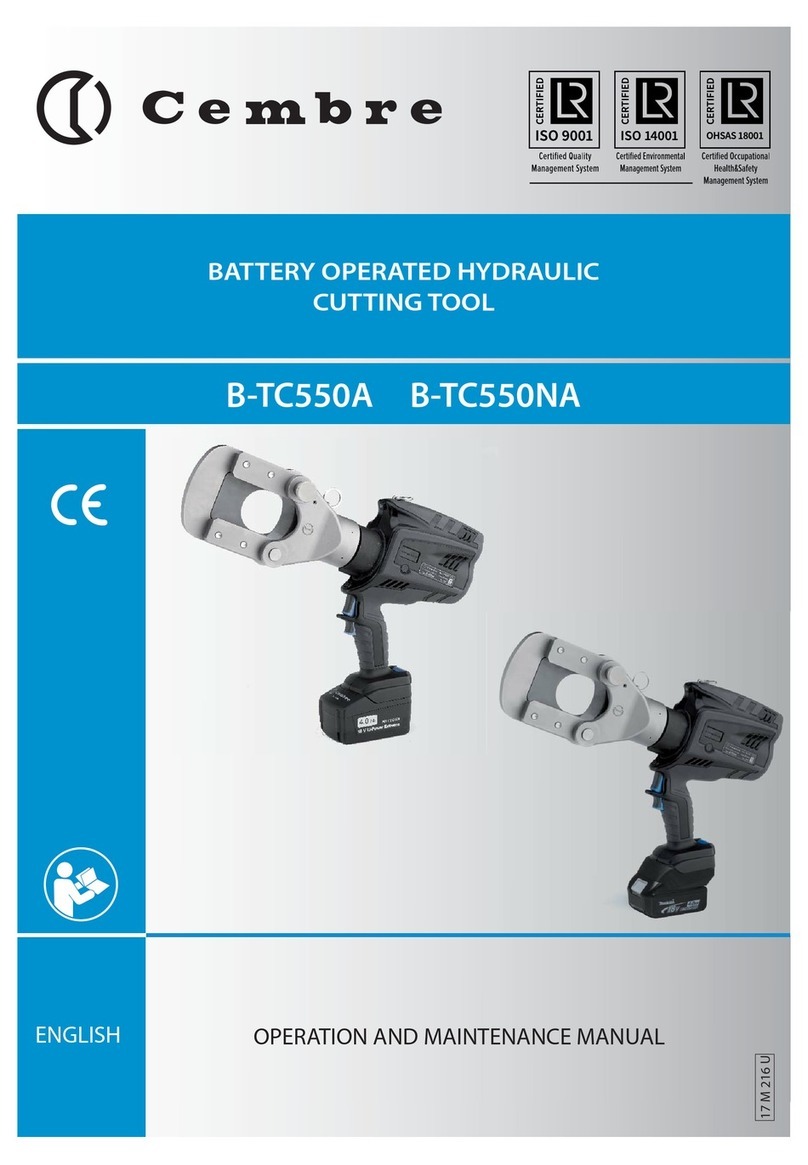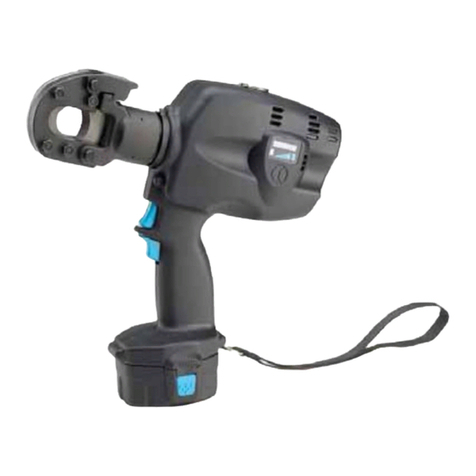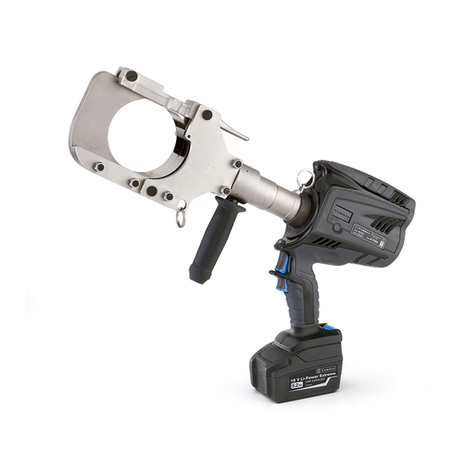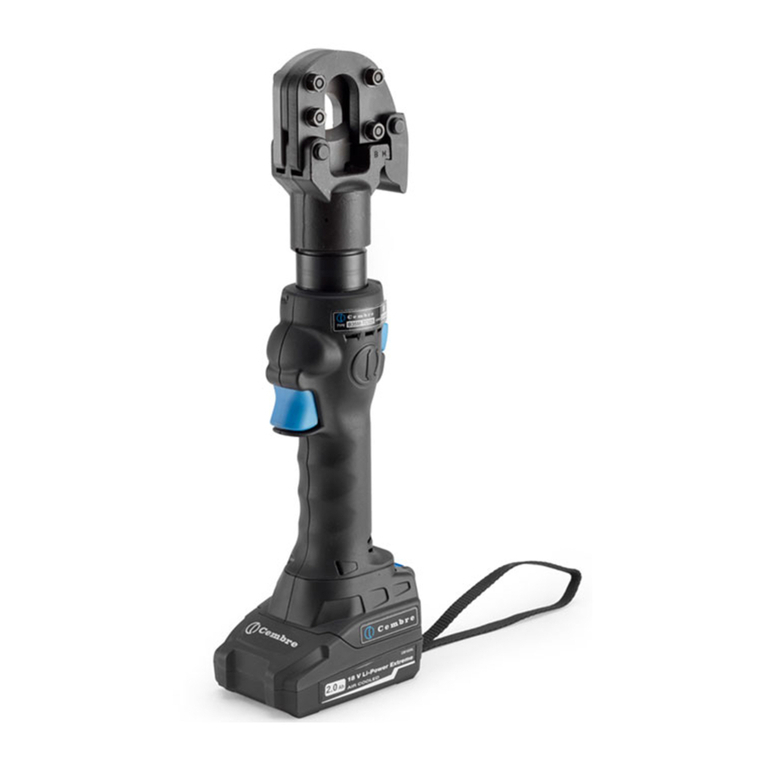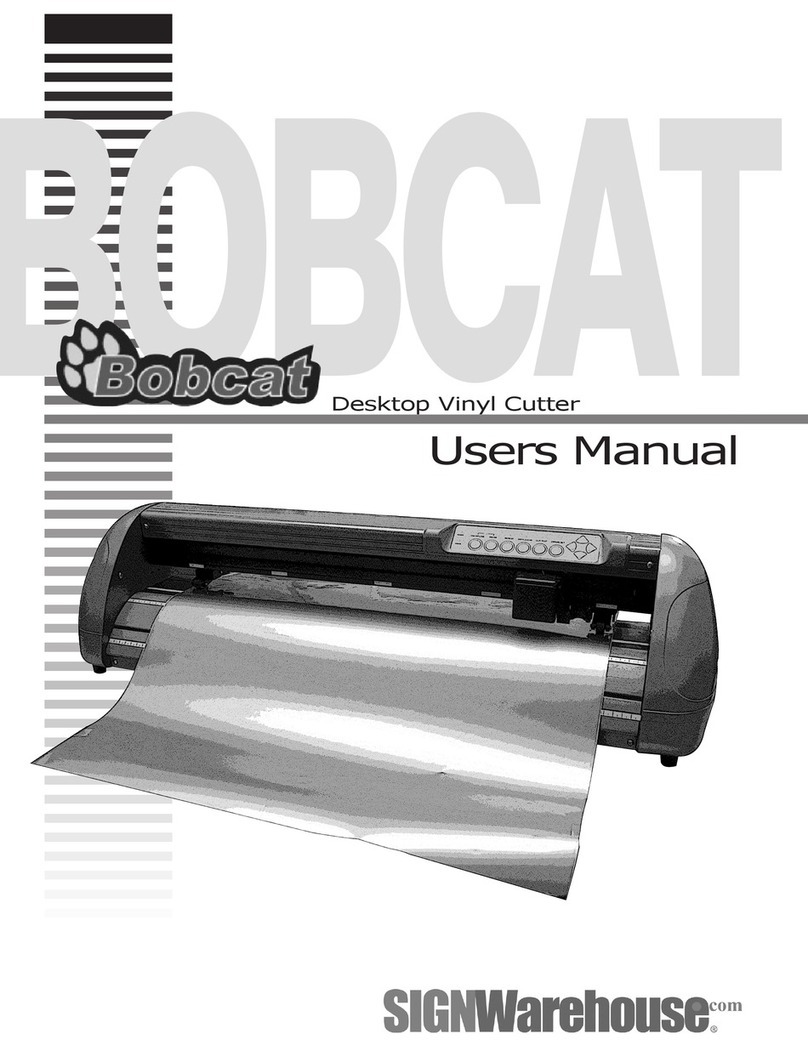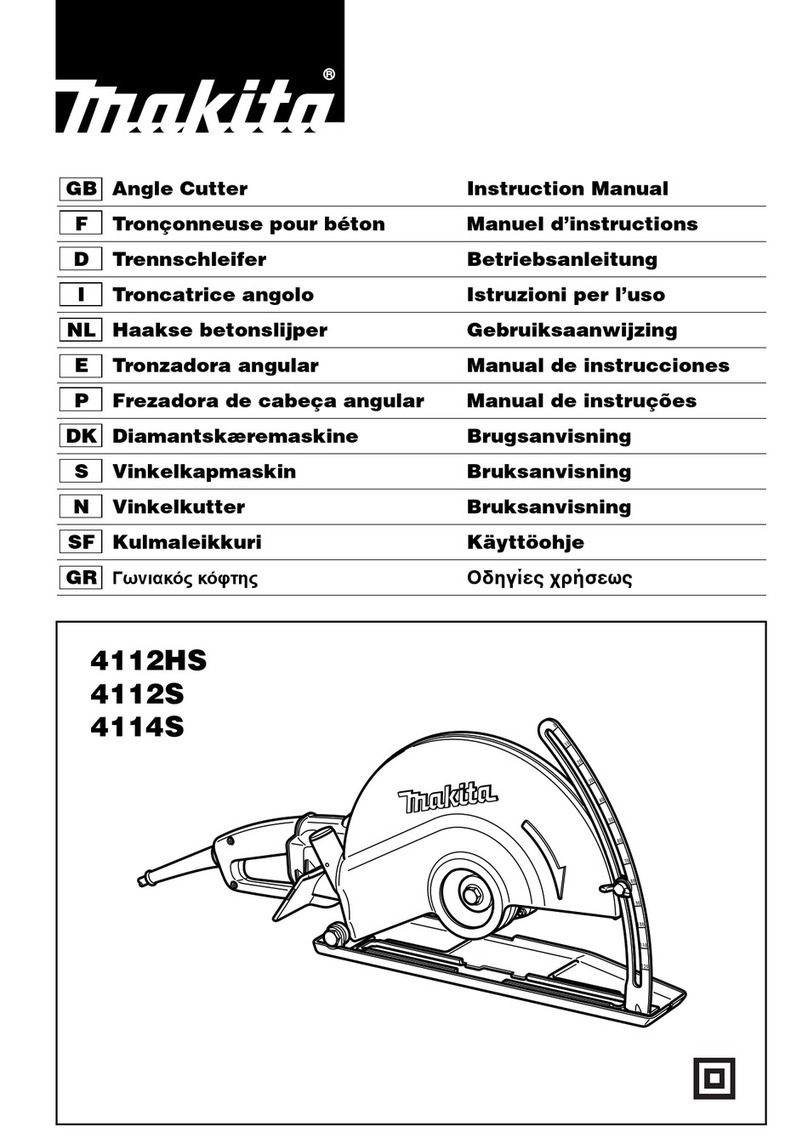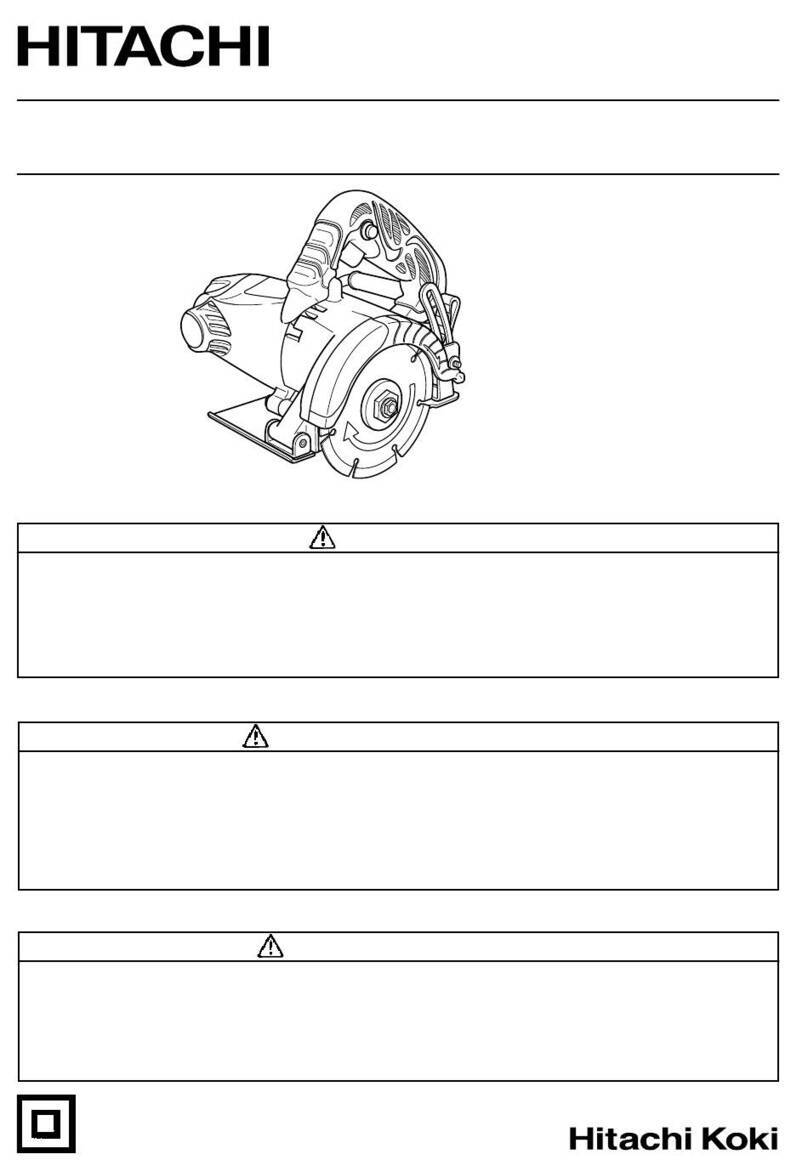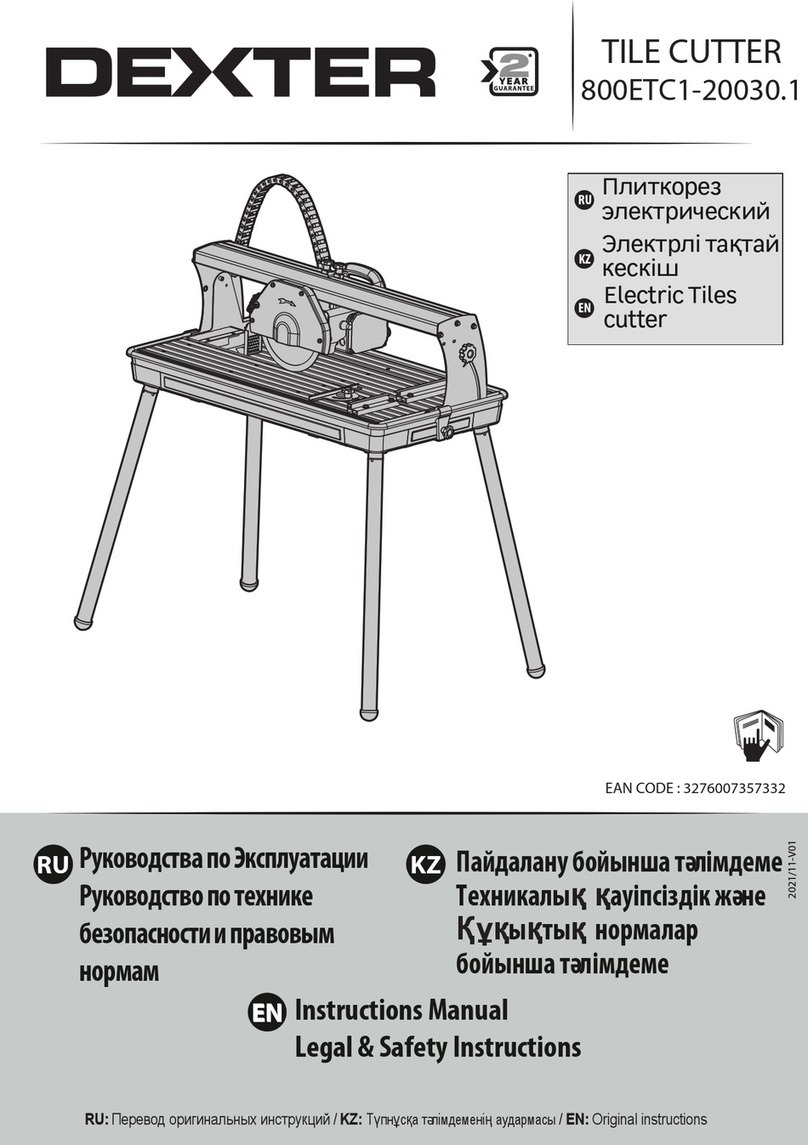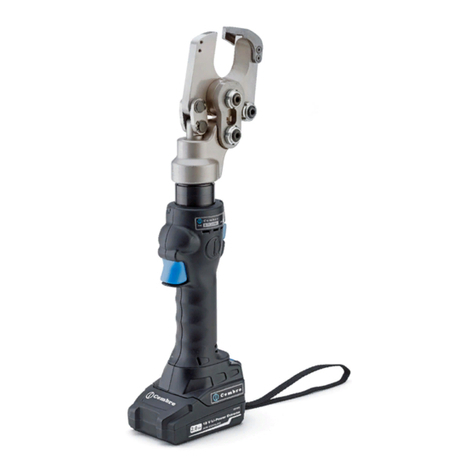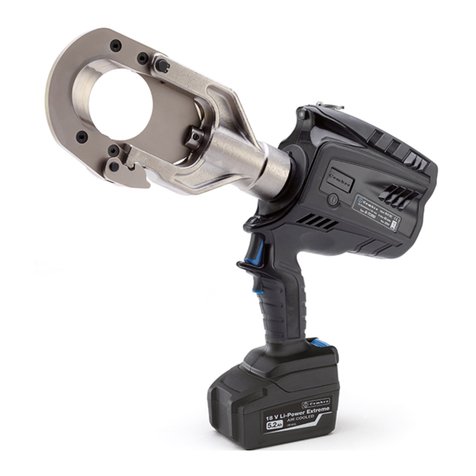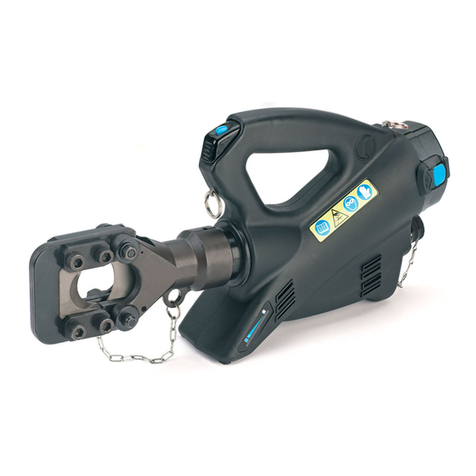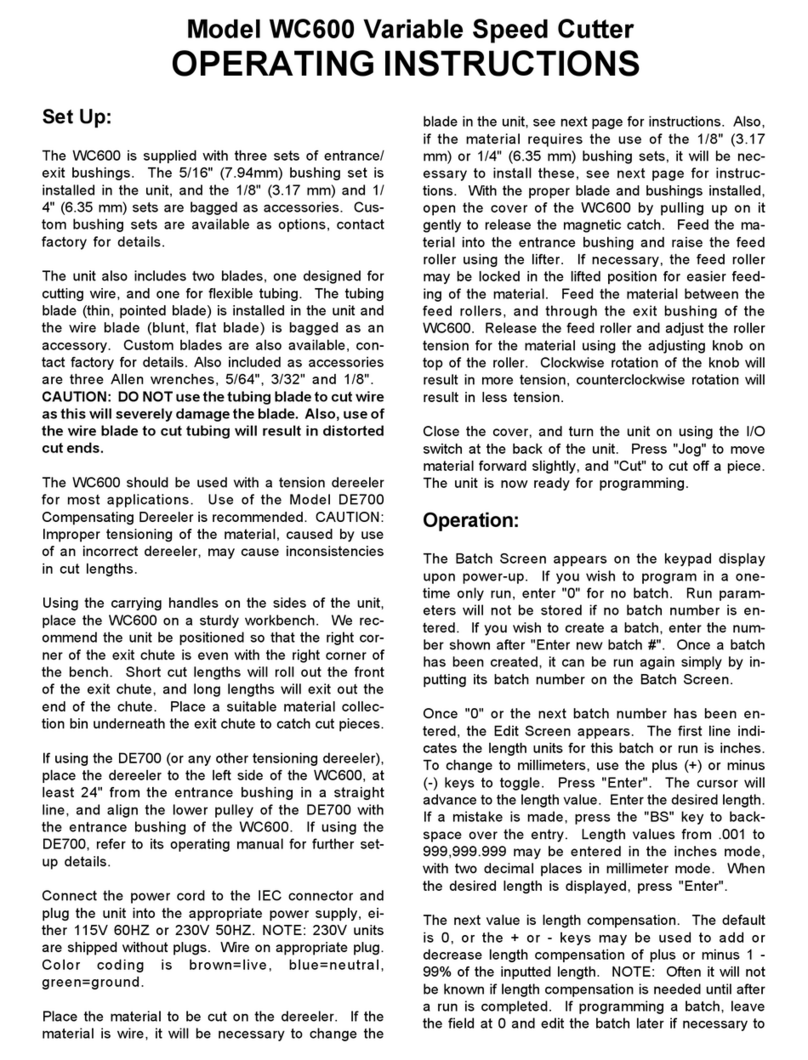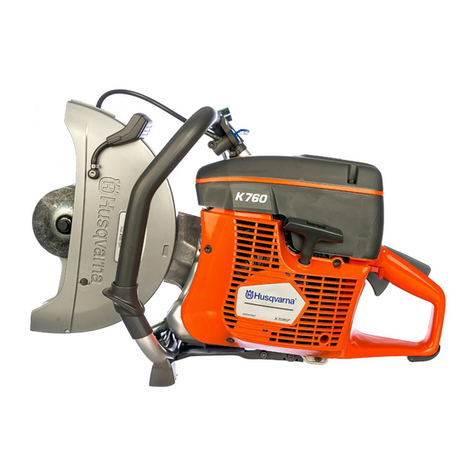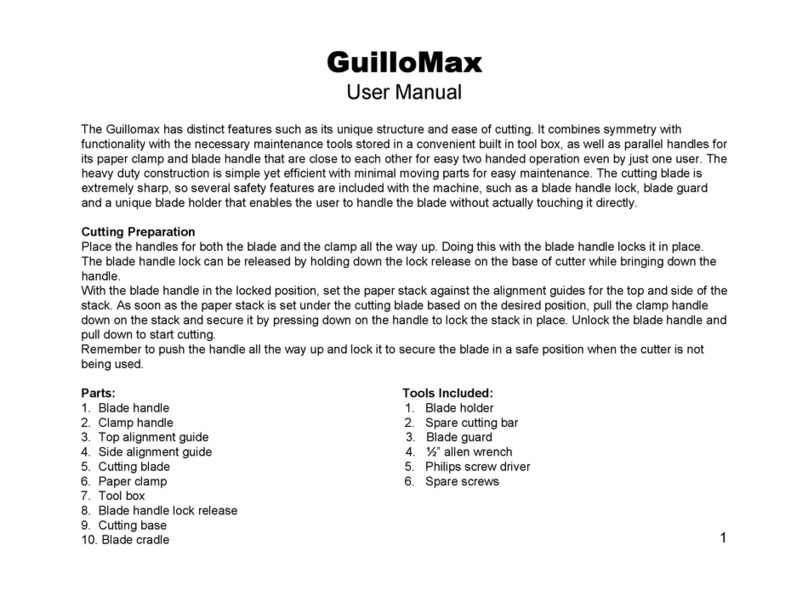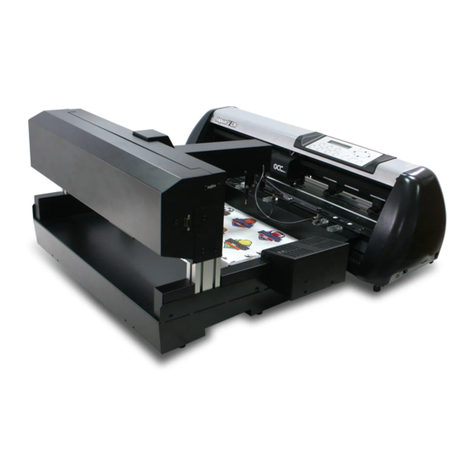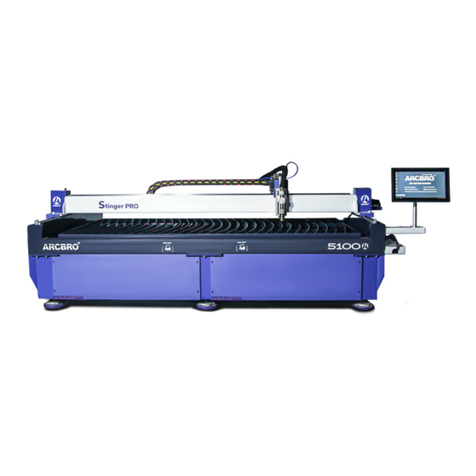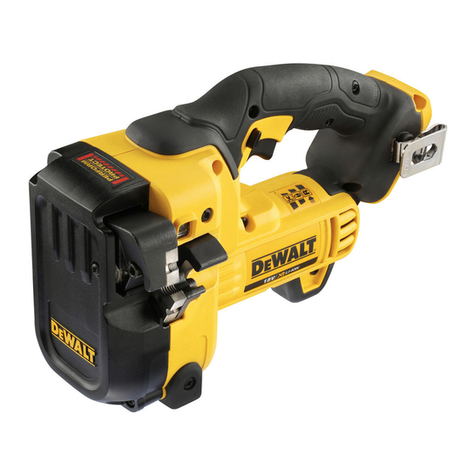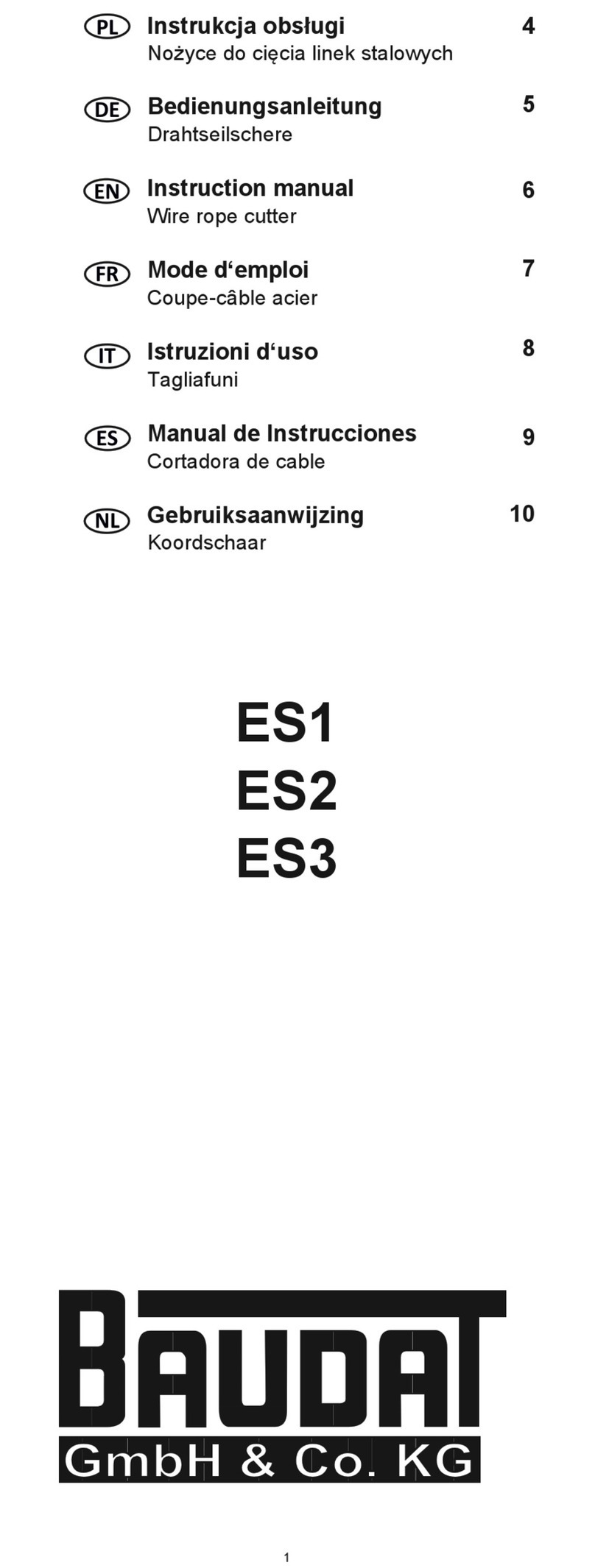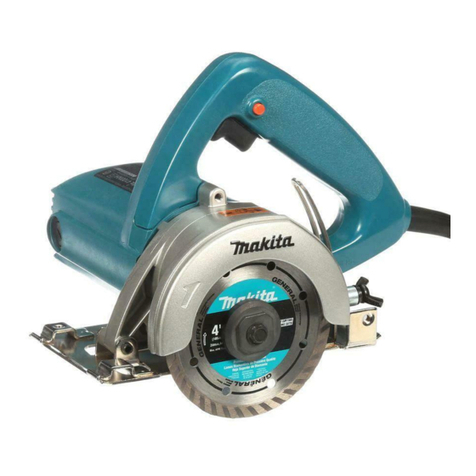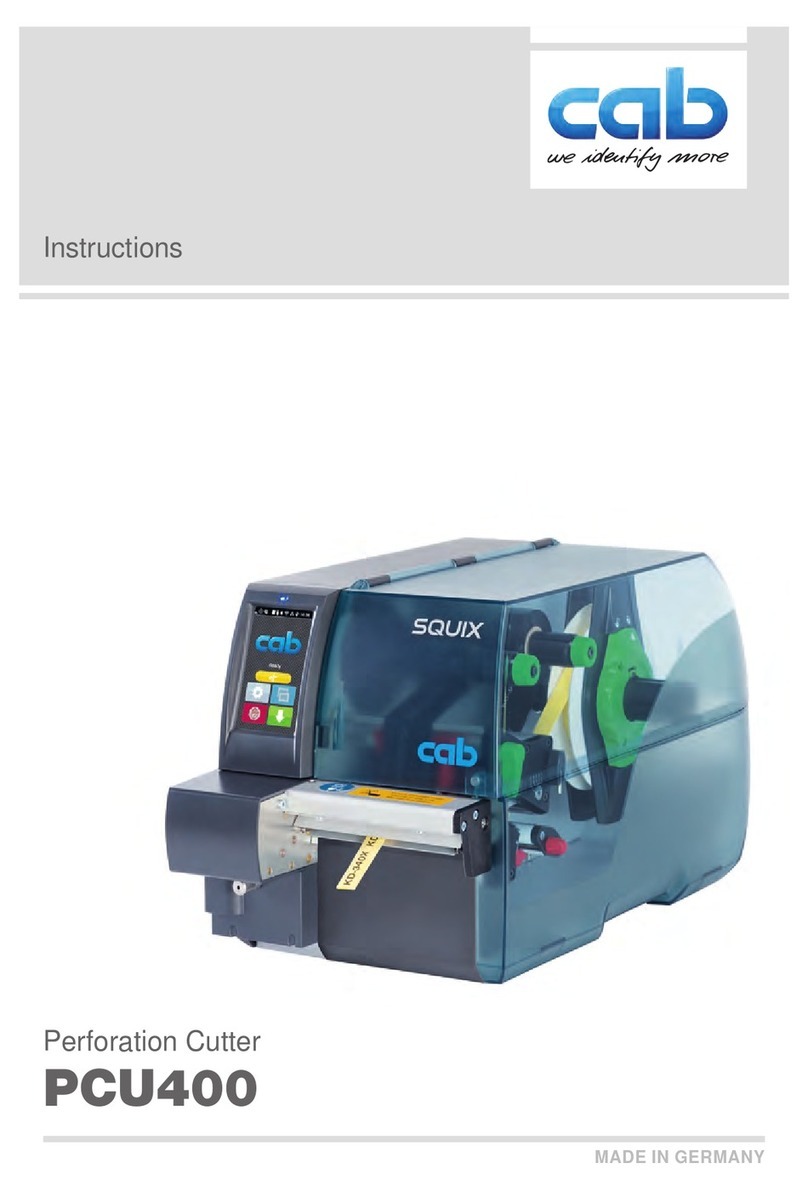
7
ENGLISH
7. PARTS LIST (Ref. to Fig. 4)
The items marked ( ) are those Cembre recommends replacing if the tool is disassembled.
These items are supplied on request in the “HT-TC051 Spare Parts Package”.
The guarantee is void if parts used are not Cembreoriginal spares.
When ordering spare parts always specify the following:
- code number of item
- name of item
- type of tool
- tool serial number
Code N° Item DESCRIPTION Qty Code N° Item DESCRIPTION Qty
6800040 01 RESERVOIR CAP 1
6720050 02 OIL RESERVOIR 1
6480055 03 MAIN HANDLE 1
6360250 04 O-RING 1
6740100 05 5/32" BALL 1
6520160 06 SUCTION SPRING 1
6740020 07 1/4" BALL 1
6520200 08 SPRING 1
6340590 09 BALL POSITIONING DOWEL 1
6360270 10 O-RING 1
6040181 11 BACK-UP RING 1
6160027 12 BODY 1
6860101 13 HEAD 1
6620171 14 RAM 1
6361810 15 SEAL 1
6641020 16 M 6 COPPER WASHER 1
6900334 17 M 6x30 SCREW 1
6420231 18 LOWER BLADE 1
6560691 19 UPPER BLADE PIN 1
6040421 20 Ø 10 CIRCLIP 1
6900315 21 M 6x16 SCREW 4
6370141 22 LEFT GUIDE 1
6420241 23 UPPER BLADE 1
6370151 24 RIGHT GUIDE 1
6700140 25 CIRCLIP 1
6560701 26 LATCH PIN 1
6520460 27 SPRING 1
6200051 28 LATCH 1
6370250 29 BLADE HOLDING SCREW 1
6080051 30 RAM BUSHING 1
6522314 31 BLADE RETURN SPRING 1
6360266 32 O-RING 1
6360161 33 O-RING 1
6560262 34 MOVABLE HANDLE PIN 2
6700060 35 CIRCLIP 4
6040101 36 BACK-UP RING 1
6362020 37 SEAL 1
6620090 38 PUMPING RAM 1
6360240 39 O-RING 1
6340590 40 BALL POSITIONING DOWEL 1
6520200 41 SPRING 1
6740020 42 1/4" BALL 1
6232000 43 LABEL (TG. 0351) 1
6480909 44 MOVEABLE HANDLE 1
6380200 45 HANDLE GRIP 1
6895020 46 MAX PRESSURE VALVE 1
6040080 47 BACK-UP RING 1
6360140 48 O-RING 1
6020027 49 PRESSURE RELEASE PIN 1
6600020 50 SPRING LOADED PIN 1
6520280 51 SPRING 1
6360120 52 O-RING 1
6740120 53 7/32" BALL 1
6600100 54 BALL SUPPORT 1
6520520 55 SPRING 1
6360166 56 O-RING 1
6900341 57 M 8x10 SCREW 1
6440100 58 PRESSURE RELEASE LEVER 1
6760100 59 ø 3x16 SPLIT PIN 1
6232303 60 METAL LABEL (TG. 0503) 1
6650118 61 RIVET ø 2,5x3,5 2
6635011 62 PRESSURE RELEASE PIN 1
6520861 63 SPRING 1
6340720 64 PRESSURE RELEASE DOWEL 1
6520160 65 S UCTION SPRING 1
6740100 66 5/32" BALL 1
6641020 67 M 6 COPPER WASHER 1
6900601 68 SUCTION SCREW 1
6860131 HEAD ASSEMBLY
6780271 COMPLETE RAM
6000088 SPARE PARTS PACKAGE
